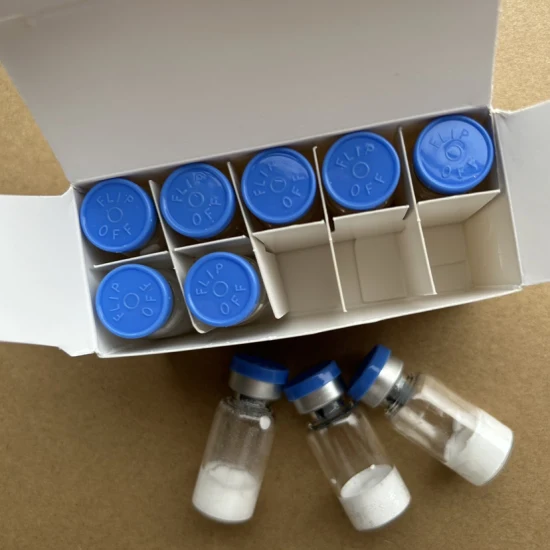Home / Products

Retatrutide is a groundbreaking triple agonist targeting the glucose-dependent insulinotropic polypeptide (GIP), glucagon-like peptide-1 (GLP-1), and glucagon receptors. This novel compound, unveiled by Eli Lilly in June 2023, is engineered to address obesity and type 2 diabetes through a multifaceted approach that enhances receptor activation for superior blood sugar regulation and weight management. Clinical studies have shown promising results, with a 48-week phase 2 obesity trial revealing significant weight reductions of 22.8% and 24.2% at 8 and 12 mg doses, respectively.
Retatrutide represents a new frontier in peptide therapy, designed as a fusion peptide acting on multiple receptors. This innovative approach allows for broad therapeutic applications and potential label extensions post-approval. The compound's development builds on the success of dual agonists like Tirzepatide (Mounjaro), with Retatrutide offering enhanced efficacy through its triple receptor activity.
Basic Information
Clinical trials have demonstrated Retatrutide's significant impact on glucose and weight management. A phase 2 trial published in June 2023 in The New England Journal of Medicine reported weight loss of 17.5% at week 24 and 24.2% at week 48 for the 12 mg dose group. A phase 2 trial published in August 2023 in The Lancet highlighted superior efficacy in reducing HbA1c and body weight compared to Dulaglutide. Retatrutide is also under investigation for various other indications, including metabolic-associated fatty liver disease (MASLD), obstructive sleep apnea, and knee osteoarthritis, with ongoing phase 3 trials.
PS Chemical Consortium employs state-of-the-art synthetic techniques to produce Retatrutide, ensuring the highest quality and efficacy. Our production process includes:
Peptide Synthesis
Purification and Characterization
Retatrutide's peptide sequence is meticulously crafted to optimize its therapeutic effects. Key structural features include:



References
266-OR: Retatrutide, an Agonist of GIP, GLP-1, and Glucagon Receptors, Improves Markers of Pancreatic Beta-Cell Function and Insulin Sensitivity
Diabetes 2024;73(Supplement_1):266-OR DOI: 10.2337/db24-266-OR
Retatrutide (RETA), an agonist of GIP, GLP-1 and glucagon receptors, significantly reduced HbA1c up to 2.2% in T2D and body weight up to 17% in T2D at wk 36 and 24% in obesity without T2D (OB) at wk 48 in Ph2 trials. Proinsulin and proinsulin/C-peptide ratios, measures of beta-cell stress and dysfunction, decreased from baseline with RETA, by up to 71% and 62%, respectively, in T2D (p<0.001). In conclusion, RETA improved markers of beta-cell function in T2D and markers of insulin sensitivity in T2D and OB.
Triple hormone receptor agonist retatrutide for metabolic dysfunction-associated steatotic liver disease: a randomized phase 2a trial
Nature Medicine volume 30, pages2037–2048 (2024) DOI: 10.1038/s41591-024-03018-2
Retatrutide is a novel triple agonist of the glucose-dependent insulinotropic polypeptide, glucagon-like peptide 1 and glucagon receptors. A 48-week phase 2 obesity study demonstrated weight reductions of 22.8% and 24.2% with retatrutide 8 and 12 mg, respectively. The main study was a 48-week, phase 2, multicenter, randomized, double-blind, placebo-controlled study designed to examine the safety and efficacy of retatrutide, administered subcutaneously once weekly in participants with obesity (BMI of 30 kg m−2 or greater), or overweight (BMI ≥27 and <30 kg m−2) with weight-related complications other than T2D.